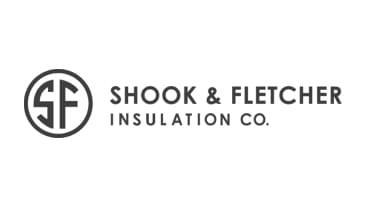Shook & Fletcher
Shook and Fletcher Insulation Company made asbestos insulation products from 1949 through the 1970s. Asbestos litigation compromised the company’s finances and forced it to file for bankruptcy in 2002. That same year, it created an asbestos trust fund with $109 million to handle claims.

Shook & Fletcher’s History with Asbestos
Shook & Fletcher got its start manufacturing iron, coal and brick products. It transitioned into the insulation industry in 1949 when it began making asbestos-containing insulation products.
Asbestos was once considered the ideal fireproofing and insulating material for its ability to withstand high temperatures. As a result, insulation industry employees often came in contact with asbestos as they worked with these products.
Tens of thousands of these workers have sued Shook and Fletcher because they developed asbestos-related diseases after handling the company’s products.
In 2002, Shook and Fletcher filed to reoganize through Chapter 11 bankruptcy because of asbestos litigation. By that time, the company had already paid more than $40 million in asbestos lawsuit settlements.
As of 2022, the company continues to operate with eight locations in Tennessee, Alabama and Georgia.
Development of Shook & Fletcher Trust
The bankruptcy and reorganization plan created the Shook & Fletcher Asbestos Settlement Trust, to handle asbestos claims. The trust fund was established in 2002 and contains an estimated $109 million to compensate victims.
People with asbestos-related diseases caused by Shook and Fletcher products can file a claim with the trust. The processing facility accepts claims from employees who worked one of 400 job sites where exposure to Shook and Fletcher Products occurred.
The trustee for the trust announced in May 2017 that claimants who receive compensation offers would be paid at 76% of their approved amount. The decrease was based upon estimated future claims, along with other factors. The percentage had risen from 70% to 83% in 2014.
In July 2019, the trustee decreased the payment percentage to 50%. This percentage is significantly higher than the average paid by other asbestos trust funds.
Asbestos Litigation Involving Shook & Fletcher
Workers who developed asbestos-related diseases after working with the company’s products have filed asbestos lawsuits against Shook and Fletcher since the mid-1970s. When the company filed for bankruptcy in 2002, they reported at least 80,000 active asbestos lawsuits.
- One such lawsuit was filed by the wife of a deceased insulator. Her husband passed away from mesothelioma caused by asbestos exposure that occurred at various companies, including Shook and Fletcher. The final verdict was $8.4 million dollars, which was split among all the companies he had worked for.
In 1993, Shook and Fletcher and 19 other asbestos manufacturers filed a class action lawsuit to settle their asbestos-related claims. This legal maneuver made its way to the Supreme Court, where the case was rejected. The company then spent six years settling agreements with all of its insurers, except for Safety National Casualty Company.
Shook and Fletcher filed suit against the company for asbestos claims they handled between 1983 and 1985.

Gain access to trust funds, grants and other forms of compensation for you or your loved ones.
Get Help NowShook & Fletcher’s Asbestos Products and Workers at Risk
Shook & Fletcher’s products that may have contained asbestos include:
- Insulation
- Insulating cement
- Tapes
- Banding seals
- Adhesives
- Ceramics
- Fibers
- Textiles
- Coatings
- Seals
- Cryogenic wool
- Fabrication equipment
- Phenolic foam
- Curtain wall insulation
- Fiberglass
- Mineral fiber pipe
- Plastic jacketing
The company’s product line also includes dozens of thermal and acoustic insulation products. Shook and Fletcher employees who helped manufacture these products before the 1970s were at high risk of asbestos exposure.
More than 34 manufacturing companies helped produce Shook and Fletcher products. These companies included Dow Chemical Company, Forrest Manufacturing Company and Owens Corning Fiberglass. Employees of these partner companies also faced asbestos exposure risks when they manufactured Shook and Fletcher products.
Construction workers came into contact with asbestos when they installed or repaired the company’s products. The products remained on commercial job sites long after the company stopped producing asbestos materials.
As a result, industrial workers in many of the company’s occupations may have even inhaled the fibers when handling Shook and Fletcher materials after the 1970s.
The occupations at risk of exposure to Shook & Fletcher’s asbestos products include:
- Insulators
- Construction workers
- Industrial workers
- Boiler workers
- Chemical plant workers
- Power plant workers
- Oil refinery workers
- Automobile factory workers
- Steel plant workers
- Textile plant workers
- Paper plant workers
- Mill workers
- Shipyard workers
- Veterans of the armed forces
Shook & Fletcher History
Shook and Fletcher originated in 1901 as an iron, brick and coal products manufacturer. They expanded into the insulation sector in 1949, and today they remain one of the largest industrial insulation producers in the southeast United States.
Employees of Shook and Fletcher bought the company in 1967. It has remained family owned and operated since that time.
Until the 1970s, Shook and Fletcher predominantly used asbestos to provide the insulation component of their products. They then replaced the asbestos fibers with fiberglass and other chemicals such as polystyrene, talc and hexabromocyclododecane (HBCD).
Shook and Fletcher operates six distribution facilities that serve customers in Alabama, Georgia, Tennessee, Mississippi and the Gulf Coast. They work with more than 30 different manufacturers to produce more than 50 specialty products. None of these products are used for residential insulation purposes.
Recommended Reading


